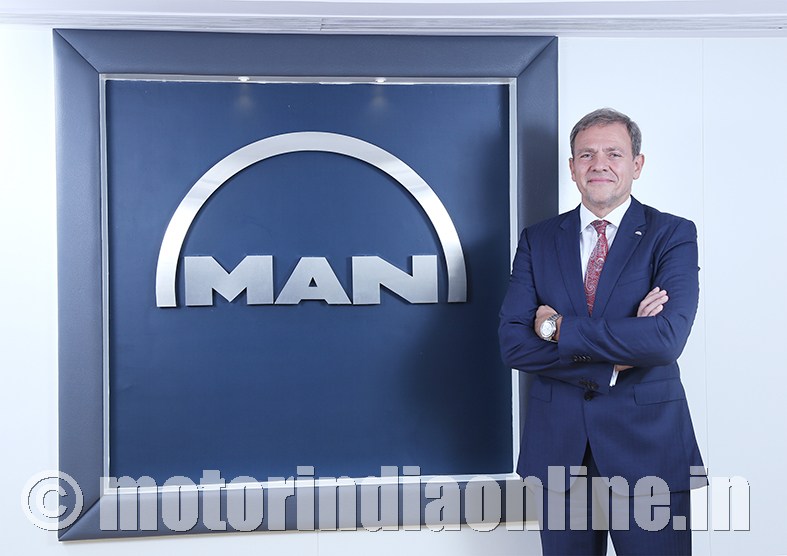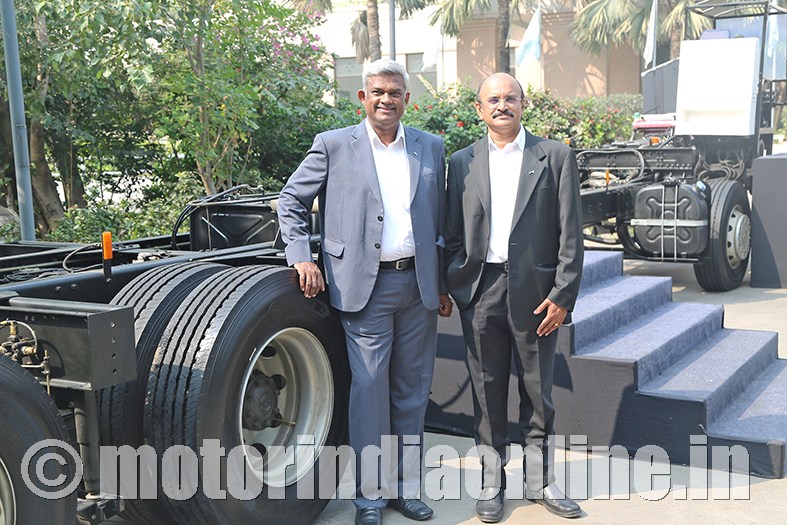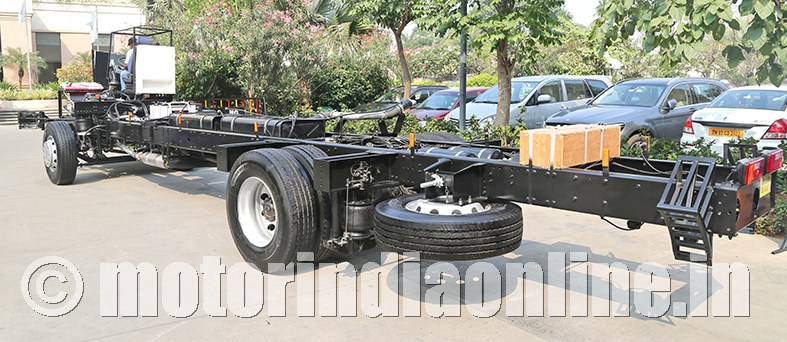Woos customers with new CLA BS-IV bus chassis range
MAN has taken another important step as part of its focused come-back and expansion journey in the Indian market. Ever since last year, MAN Trucks India, under the leadership of Mr. Joerg Mommertz, Chairman & Managing Director, and his experienced senior management team, has taken a consistent and measured approach to get back into the thick of things in the Indian CV market. It started off with the introduction of MAN’s BS-IV

compliant CLA EVO truck range, rightly backed by a careful and qualitative expansion of its sales & service network across the country. This was followed by the launch of a host of new initiatives to step up customer support & connect post which we had the MAN CLA EVO Expedition to put across the message of the robustness and reliability of the brand’s haulage truck range.
The company has made a head start in 2018, marking its re-entry into the bus segment with the unveiling of its new CLA BS-IV Bus Chassis range. Rewinding the clock by six years, one could recollect that MAN-Force, the erstwhile JV company, had showcased its front-engine inter-city coach Aerobus at 2012 Auto Expo. Though things did not really pan out the way MAN would have wanted back then, the company has far more clarity, better market understanding and a reliable team to steer the ship towards success.
As part of its plan to target the southern market to start with, MAN showcased the new chassis to potential customers, bus body builders and other channel partners at Bengaluru and Chennai. The company plans to cover different geographies in a phased manner and will head towards the North and West regions once the southern markets are covered.
Inter-city application
The chassis is available in two models of 18.250 (4×2) and 22.300 (6×2) multi-axle. MAN has partnered with three leading bus body builders – MG Group, S. M. Kannappa and Mithra Coaches – who can offer different innovative body designs to customers. The new CLA BS-IV bus chassis models, with front-mounted engine are manufactured at MAN’s plant in Pithampur, Madhya Pradesh.

The CLA bus chassis are designed for inter-city coach application. A robust structure using tried and tested components in the chassis & driveline create the prerequisites for high reliability and longer product life.
Mr. Joerg Mommertz, Chairman & Managing Director, MAN Trucks India, says: “The new BS-IV compliant CLA bus chassis is built on the established attributes of the MAN brand in India – reliability and efficiency. We have now added the aspects of safety and comfort. The fundamental needs of customers being operational performance and efficiency of the product along with safe &comfortable journey for their passengers, we at MAN offer a compelling proposal for them. With the solutions from our bus body builder partners, customers can ask for various options for their inter-city operations. We are confident that, with the value proposition on offer, MAN will create a unique position in the market.”
With the Central Government according greater priority to building new highways across the country for faster connectivity, inter-city bus travel is expected to get a further boost. Operators are demanding new solutions that offer attractive value proposition to help bring in more passengers.
The new CLA BS-IV bus chassis are backed by a high performance BS-IV compliant 250 hp and 300 hp MAN D-0836 engines mated to a 6-speed gearbox. The turbo-charged, intercooled common-rail direct inject system and SCR technology make the engine fuel efficient, environment friendly and more reliable. Superior power delivery and linear torque provide powerful acceleration starting even at low engine speeds.
As passenger safety and comfort is of paramount importance, air actuated drum brakes and anti-lock braking system (ABS) noticeably improve braking  safety and driving stability. The retarder and the patented engine valve brake from MAN provide enhanced braking efficiency and improved brake life. The new CLA BS-IV chassis have been designed to incorporate the full range of comfort and safety at the driver’s workplace, in turn, making the journey much safer even under tough operating conditions.
safety and driving stability. The retarder and the patented engine valve brake from MAN provide enhanced braking efficiency and improved brake life. The new CLA BS-IV chassis have been designed to incorporate the full range of comfort and safety at the driver’s workplace, in turn, making the journey much safer even under tough operating conditions.
Advantage front engine
Why did MAN opt for front engine as against rear engine which is a more common choice globally? Mr. S. Somasundaram, Head (Sales), MAN Trucks India, responds: “The low NVH was one of the main factors in favor of rear engine buses while another was the monocoque chassis that made it possible for the middle portion of the vehicle to be used as luggage compartment. As long as these two aspects are taken care of, we have had many matured and experienced customers tell us that front engine is a better option. In fact, some renowned and respected large fleet operators have given us a feedback that they are happy with our chassis as they were looking for a good front engine option. We are positioning our product in the premium economy space, in between the mass market segment and the top-end premium space, and strongly feel we can offer a very good value-proposition for our customers.”
 The new chassis models have been priced quite aggressively – the 4×2 250 hp chassis coming at Rs. 33.4 lakhs, the 4×2 300 hp chassis priced at Rs. 34.8 lakhs and the 6×2 300 hp model priced at Rs. 39.7 lakhs (all prices inclusive of GST) – in an attempt to woo customers to add the MAN brand to their vehicle fleet.
The new chassis models have been priced quite aggressively – the 4×2 250 hp chassis coming at Rs. 33.4 lakhs, the 4×2 300 hp chassis priced at Rs. 34.8 lakhs and the 6×2 300 hp model priced at Rs. 39.7 lakhs (all prices inclusive of GST) – in an attempt to woo customers to add the MAN brand to their vehicle fleet.
With a calculated approach, coupled with measured aggression, what position does MAN expect to reach in the domestic bus market by the end of 2018? Mr. Somasundaram replies: “We have received good interest for our new chassis from most of the fleets and will take it forward with them. By the end of 2018, we hope to have put quite a few buses on road with customers understanding our market positioning and the product delivering as promised. We expect many of our vehicles to have crossed 1 lakh km by then (end of 2018) which would give customers a good understanding of our deliverables and that we deliver what is being promised to them.”